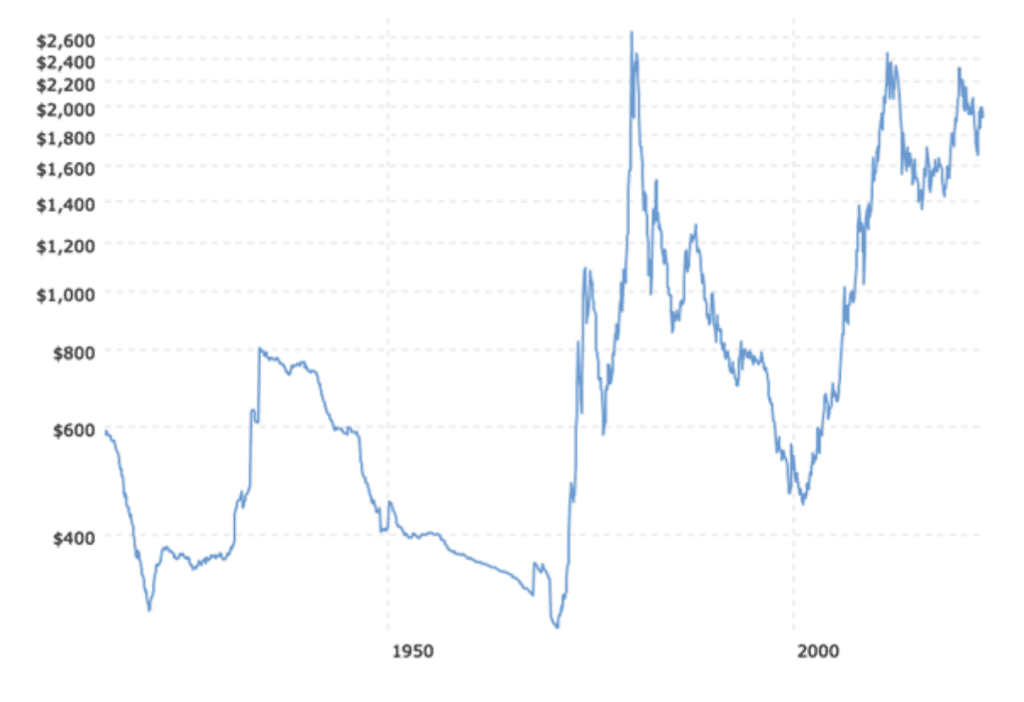“Gold needs weak economic data as a catalyst to push prices higher…” trumpeted a headline this past weekend.
In a similar vein is the oft stated claim that “a recession is good for gold”.
Several months ago, someone said that all gold needed to move to new highs above $2000 was lower inflation numbers.
Earlier this year, the supposed “catalyst” for higher gold prices was more bank failures. Before that it was the Russia-Ukraine war.
Other things needed for higher gold prices are a Fed pivot, a weaker dollar, more social unrest, lower interest rates, etc.
The so-called safer assumption is that a higher gold price will present itself as a result of any combination of the above items/events.
Will any of these things make a difference? No.
BAD NEWS IS GOOD NEWS
We have reached the point where most people assume that gold goes up in price because of bad news – the darker the mood the higher the gold price.
Some of the most egregious claims for justification of price activity (or lack of it) in the gold market refer to the latest economic statistics, including housing starts and home sales.
A reader said that it all boiled down to confidence in gold and a lack of confidence in government, the courts, the dollar, etc.
With the exception of the U.S. dollar, none the things mentioned in this article, or anything else you can possibly think of, have anything whatsoever to do with the price of gold.
ALL ABOUT THE DOLLAR
A higher price for gold over time is a reflection of the actual loss of purchasing power in the U.S. dollar. Confidence has nothing to do with it.
The dollar has lost ninety-nine percent of its purchasing power over the past century. The price of gold reflects the U.S. dollar’s ninety-nine percent loss of purchasing power by increasing in price one hundred-fold over that same time period ($20.67 oz. to $2060 oz.).
The price of gold in dollars tells us nothing about gold. It tells us only how much purchasing power the dollar has already lost; and it does so in lagging fashion.
FALLING BEHIND AND RACING TO CATCH UP
In the chart below there are three distinct periods of rising gold prices: 1971-80, 2000-2011, and 2016-20. In each of those instances, the price of gold was playing ‘catch-up’…
Gold Prices (inflation-adjusted) – 100 Year Historical Chart
The 1970s were a catch-up period for the price of gold relative to the U.S. dollar’s loss of purchasing power over the previous four decades.
The period from 2000-11 was similar in that gold’s increasing price from a low of $250 to its then all-time high of $1895 reflected reaction to the cumulative effects of inflation that had continued to erode the value of the US dollar after 1980.
Likewise, the move from a low of $1060 seven years ago to a high of $2060 in 2020 reflected the actual loss of purchasing power in the US dollar since 2011.
During the periods when the gold price was accelerating higher, it appears that it is moving higher more rapidly than the actual effects of inflation. In reality, it is merely playing catch up to the effects of inflation that had occurred since its previous peak.
While the price of gold is higher in dollar terms than in 2011, and much higher than in 1980, the fact remains that one ounce of gold today at $2000 is no more valuable than it was at $800 in 1980 or $20 a century ago.
CONCLUSION
Gold doesn’t need anything special or significant to move higher in price. Additional deterioration in the purchasing power of the U.S. dollar will result in a higher gold price – eventually.
Owning gold (real money) because it is a proven, long-term store of value is wise. Betting on an unreasonably higher gold price in the short term for all the wrong reasons is foolish.
by Kelsey Williams for Neptune Global
********





